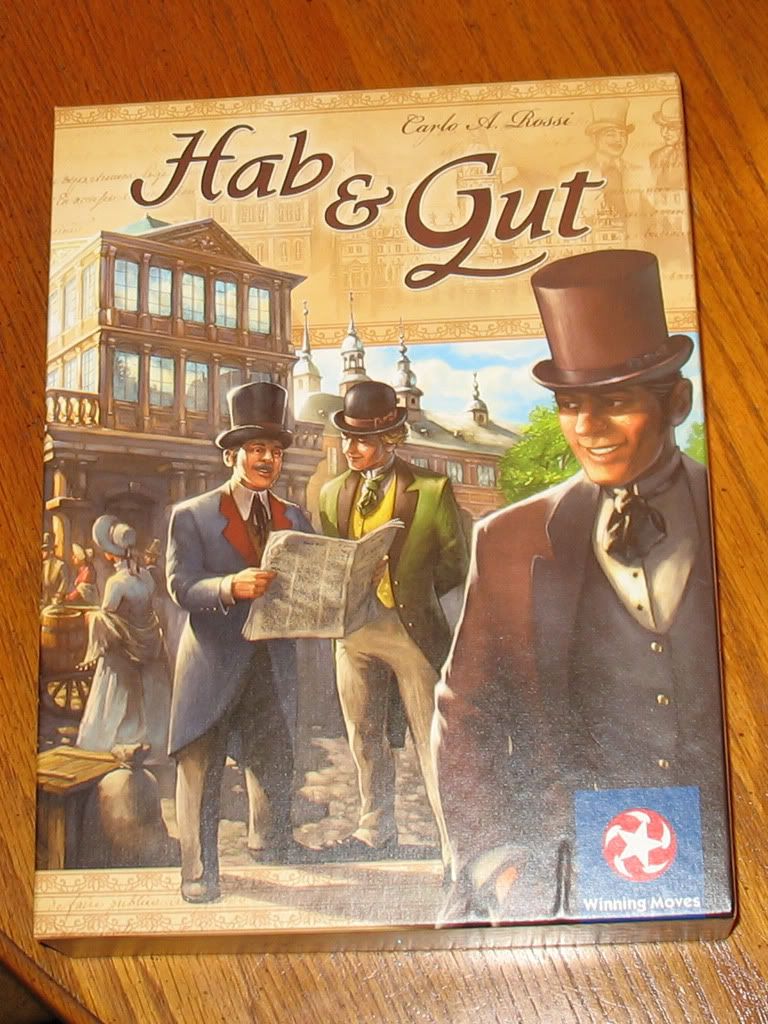
When I was in high school, the coolest personal electronic device that I or any of my friends had was our graphing calculators. Whether it was a TI-85 or an HP-48G, it was the most awesome little computer you could have at the time. Not because it was handy in class, but because they could play games. Many times these games were programmed by kids in school, and one of the easiest games to find was what was generally known as The Drug Dealer Game or Dope Wars. Essentially in the game, you had one month to pay off a specified debt. You made money by using what money you had to buy drugs at a certain price. You’d then try and sell those drugs later at a higher price. This was a staple on many calculators and cell phones, and this game mechanic has been present for a while in the realm of board games.
One such game is Hab & Gut (roughly translated to “Possessions” in English). This game is pretty straight forward. Buy low, sell high and end up with the most money at the end. Just like dealing drugs on your calculator, right? Pretty much it’s similar, except for a couple of important differences. First off, every player has a direct influence on the state of the market. As you can see, there are four racks of cards that are capable of changing the value of a given commodity. Each player is able to see two of these racks, and every card in each rack must be played in the round. From this information, the player is able to formulate a strategy in their buying and selling.
The other difference in the game is pretty important too. It’s not enough to simply make a lot of money in this game. Additionally, players have the option to donate goods to charity, and later sell those goods for their value with the money again going to charity. Much like the follower of Sobek in Cleopatra, the person who donates the least amount of money to charity automatically loses the game, regardless of their final overall score.
The game is pretty random, as you don’t know about half of the information you’d need to create a strategy. As a player, you must not telegraph your moves too quickly, as you’ll find the other players quickly sending the value of your chosen good to the bottom basement of the value track. Plays on goods must be subtle at first, as obvious buying strategies are quashed rather fast.
Overall the game plays pretty fast and makes for an enjoyable play. I’d recommend this for any one who enjoys investment games like Medici or even Winner’s Circle/Royal Turf. 6/10.



0 comments:
Post a Comment